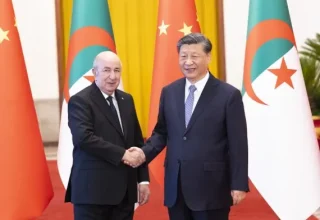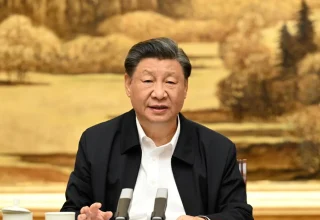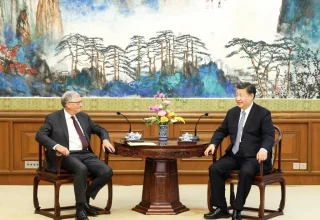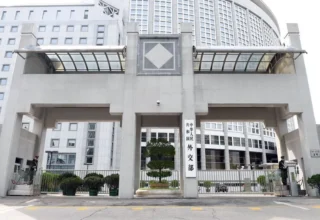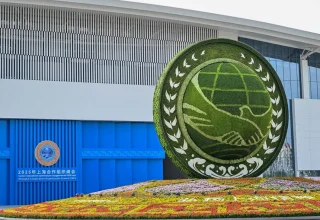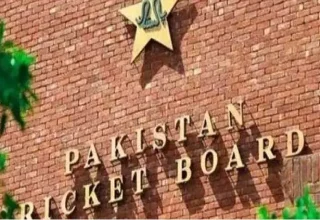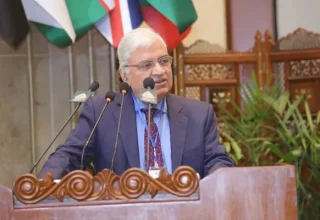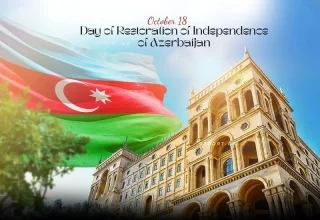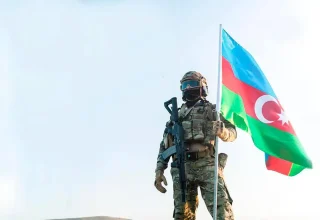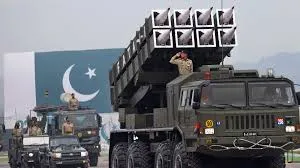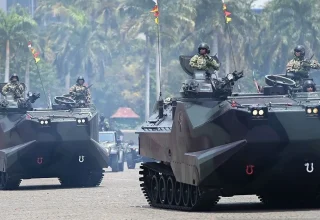
It seems that emergence of new triad of Pakistan-Azerbaijan-Türkiye has become a balancing act in the region which multiplier socio-economic, geo-political and geo-strategic effects. The era of corridors and especially Middle Corridor have opened new window of opportunities for trans-regional prosperity, progress and integration. Thus the new emerging strategic cooperation of “Pakistan-Azerbaijan-Türkiye” would be a value addition for the CPEC in the future.
Moreover, the trilateral partnership of Azerbaijan, Türkiye, and Pakistan has also become a new geostrategic alliance reshaping geo-economics and geopolitics of Eurasia. The new alliance has become a “new normal” creating a unified framework of trade, energy, defense, and crisis management cooperation and the most recently held meeting of the ECO in Azerbaijan has further enhanced strategic importance of new alignment.
Evidently, the Middle Corridor (MC) and Lapis Lazuli Route is going to create a perfect land bridge from South Asia to Europe via Gwadar, Baku, and Istanbul highlighting promise of faster cargo transit, reduced freight costs, and greater autonomy from maritime chokepoints. The most recent episode of “Straight of Hurmuz” has also emphasized the strategic importance of a new emerging trans-regional route for easy, smooth and safe maritime economy and connectivity in which the CPEC, Gwadar and Karachi dry port would play an important role in the days to come.
It is a good omen that the Lachin Summit (2025) formalized vision of greater trans-regional connectivity through coordinating efforts on the OIC, ECO and SCO further strengthening diplomatic alignment especially on key regional as well as global issues pertaining to security, peace, stability, energy integration and joint combating terrorism. Hence, this triad is positioning itself as a model for regional connectivity, resilience, and multipolar cooperation, with the potential to redefine Eurasia’s economic and strategic future.
Definitely, Prime Minister Shehbaz Sharif’s most recent visit to Azerbaijan started a new phase in the bilateral sphere further developing and diversifying the scope, utility, pace and momentum in diverse sector of economy, investment, joint ventures, agriculture cooperation, industrial coordination, infrastructure collaboration, energy oil & gas mutually befitting propositions and last but not least, defence connections.
Obviously mutual agreement to increase bilateral investment to US$2 billion, focusing on mutually beneficial projects vividly reflecting close liaison of highest political leadership, prompt policy framework of policy makers, valuable contributions of numerous ministries, departments and last but not least, chambers of commerce working jointly for the further strengthening of bilateral trade, brightening of inflows of investments and consolidating pace and progress of projects.
During the latest visit of Turkish President Recep Tayyip Erdogan to Pakistan, the Pakistan-Turkiye High-Level Strategic Cooperation Council (HLSCC) was held on Feb 13, proposing to further enhance trade, investment, banking, finance, culture, tourism, energy, defence and agriculture.
The writer is of the opinion that a well-planned and negotiated FTA can potentially increase bilateral trade from the current level of $584 million to $5 billion. It is proposed that Turkiye’s non-tariff barriers and especially the liberal use of anti-dumping laws should be addressed in the FTA. The policy makers of Pakistan should consider signing a separate FTA for its manufacturing and IT sectors, opening Pakistan’s domestic markets to Turkish imports. Thus revival of freight cargos, cluster trading under Transports Internationaux Routiers (TIR) and involvement of private sectors should be the economic mantra of both sides in which CPEC and Gwadar would play a constructive role.
Comparative studies reveal that 3,200 km, estimated land distance from Gwadar to Istanbul via Baku will further reduce maritime reliance. Furthermore, 6,500 km, of the Middle Corridor’s full route will connect China to Europe, with Azerbaijan and Türkiye as crucial connecting hubs.
The government of Azerbaijan has also already launched year of the “Lapis Lazuli Corridor” connecting Afghanistan to Europe via Turkmenistan, Azerbaijan, and Türkiye will reduce 15% savings in freight costs by integrating CPEC with Caspian transport systems. Moreover, 35-40 days to 15-18 days, decreasing cargo transit time from China to Europe through combined corridors.
Furthermore, trans-regional connectivity will further increase energy cooperation in which Azerbaijan’s over 1,000 MW hydropower potential could support a regional energy grid including Pakistan. Additionally, Pakistan-Azerbaijan defense cooperation in terms of JF-17 Block-III has become a game changer in South Caucasus. So trans-regional integration and convergence of CPEC, Middle Corridor and Lapis Lazuli routes would be a strategic development clubbing BRI-Eurasian corridor.
The writer submits that trilateral partnership should work together to further strengthen trade volumes, investments, joint ventures and industrialisation cooperation by improving trade and economic ties in the fields of textiles, garments, automobiles, IT, digitalisation, AI, hybrid agriculture, green energy, space and science, Islamic banking, higher education, joint defence production, health and tourism through rigorously implementing Preferential Trade Agreement (PTA) and Free Trade Agreement (FTA).
It is a bitter reality that the Indian lobby is gaining momentum in the South Caucasus region by providing arms supplies to Armenia consistently. So it is need of the hour that policy makers of all three countries must form a joint military production mechanism of producing 5th generation war fighter jet namely Kaan.
In summary, CPEC Phase-II flourishes plaguing-in faulty lines of trans-regional connectivity by offering immense benefits of win-win cooperation in the diverse fields of economy, investment, joint ventures, qualitative industrialization, digitalization and AI and converging this potential with Middle Corridor and Lapis Lazuli creates a direct land bridge from South Asia to Europe in the days to come.
Furthermore, CPEC is going to be connected with Afghanistan which would further brighten prospects of greater trans-regional connectivity via CPEC and Gwadar.
The genie of global power politics badly disturbed international ports and their waters due to which Red, Black, Arabian and South China Seas have become new flashpoints highlighting strategic importance of CPEC, BRI and Gwadar for easy and smooth sailing of maritime economies in the region and beyond creating a direct land bridge from South Asia to Europe.
Absolutely, this iron triangle will reduce dependence on unstable maritime routes and enhance regional trade resilience. Azerbaijan’s strategic location as a transcontinental hub is central to the new Eurasian logistics network. Hence CPEC-Pakistan-Türkiye-Azerbaijan cooperation is necessary to achieve the desired goals of socio-economic integration, financial cooperation and investments.
Azerbaijan’s LNG exports to Pakistan mark the beginning of a new East-West energy trade corridor. Pakistan’s surplus food production can balance Azerbaijan and Türkiye’s energy supply, fostering mutual security.
The emerging alliance will promote multipolar regional engagement, reducing reliance on Western-dominated channels. It is suggested that mutual cooperation in the fields of hydrogen power generation, green technologies (solar, wind), lithium batteries, EVs and joint hydro power may be initiated as soon as possible creating numerous win-win situations for both the countries and their private sectors.
The writer suggests that the policy makers of three countries should accelerate the shift to renewable energy by strengthening energy cooperation, attracting private investment in renewable energy projects, battery storage, and promoting the development of green energy corridors.
Advancing the development of climate-resilient urban ecosystems including green buildings and climate-smart agriculture practices, as well as by improving water efficiency and security, including through expanding private sector participation would further strengthen bilateral economic ties.
Cooperation in infrastructure development in the newly liberated areas, smart living, metal & mining, hybrid agriculture, SMEs, IT, Startups, digitalization, e-commerce, banking and finance, science & space, textiles, automobiles, engineering and higher education should be started immediately.


